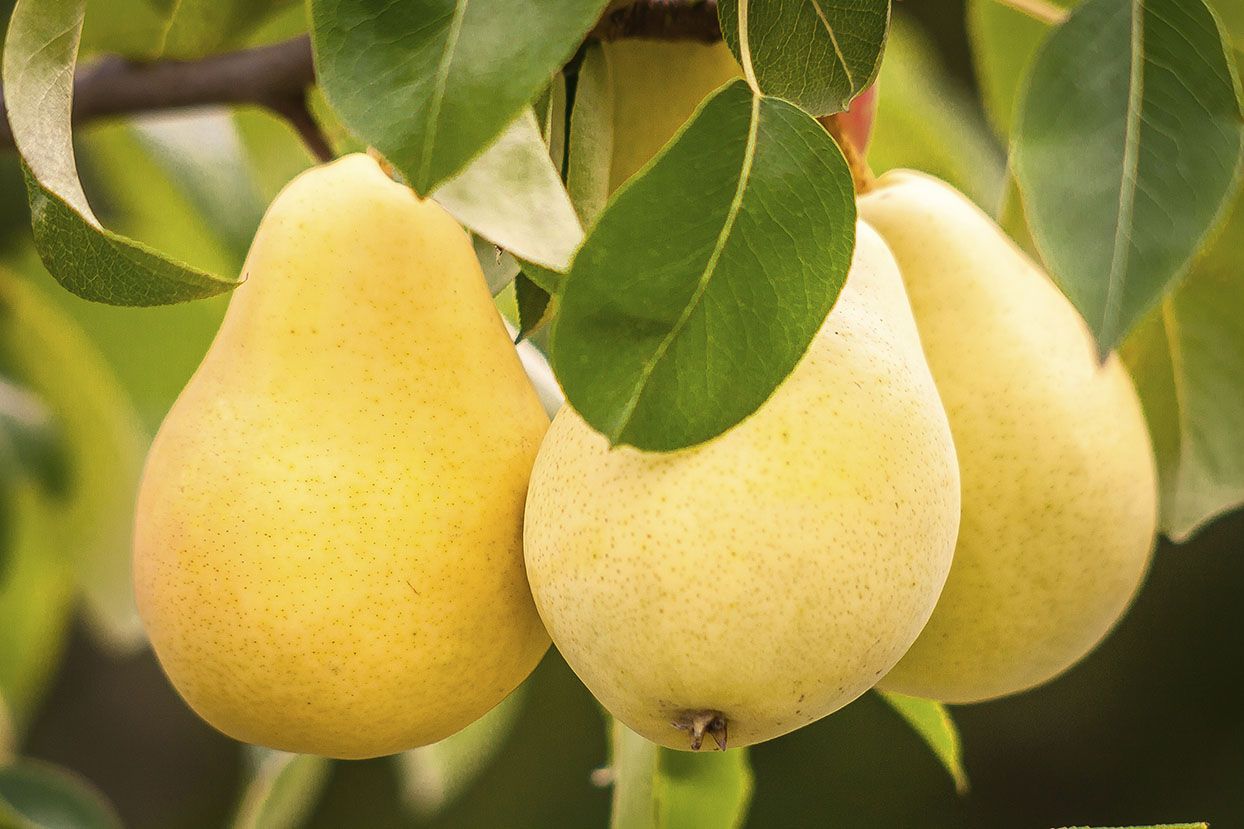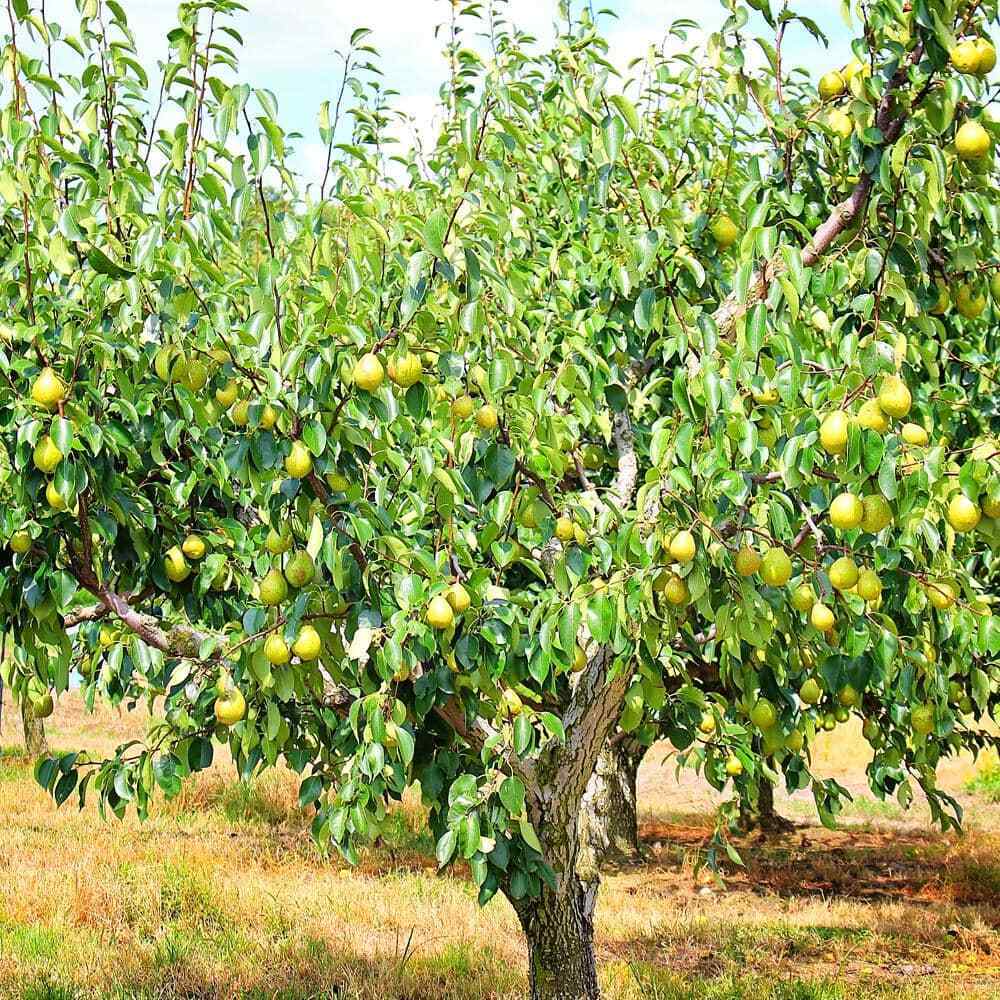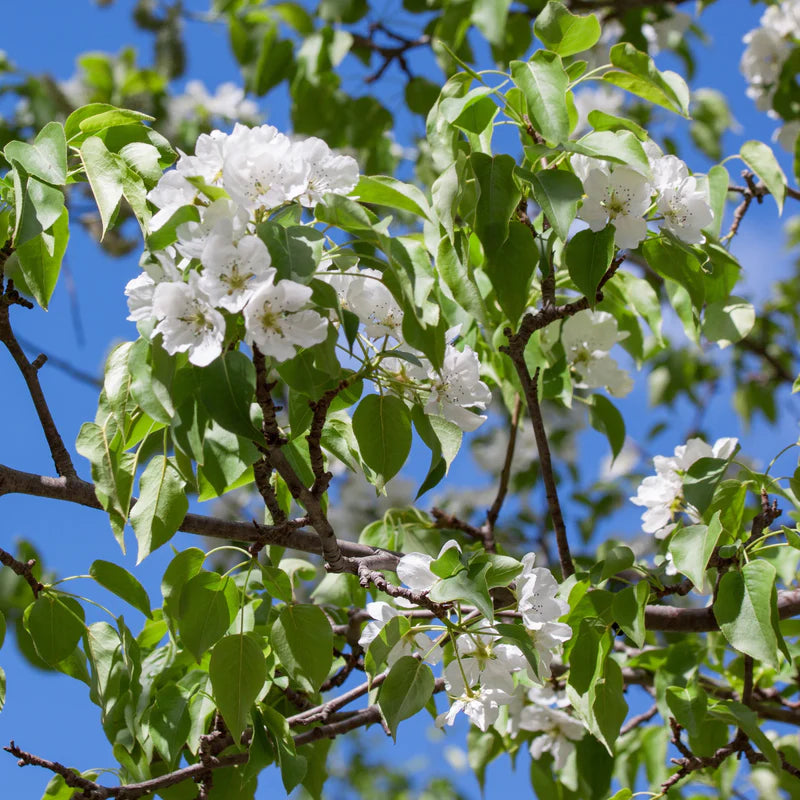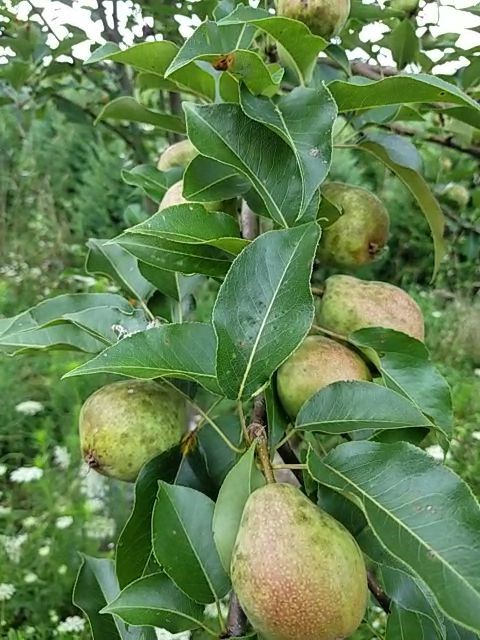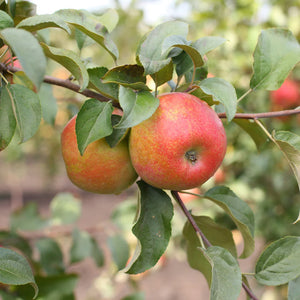Sold out! Take a look at these similar plants we have for you:
Couldn't load pickup availability
Kieffer Pear Tree – Robust, Hardy, and Perfect for Preserving
The Kieffer Pear Tree is a standout among fruit trees, valued for its hardiness, resilience, and versatile fruit. Known for its firm, juicy texture and sweet-tart flavor, Kieffer pears are ideal for fresh eating, baking, and canning. This classic Pyrus communis hybrid thrives in various conditions, making it an excellent addition to any orchard or garden.
Why Choose the Kieffer Pear Tree?
- Hardy and Resilient: Tolerates cold climates and diverse soil types.
- Versatile Fruit: Perfect for fresh eating, baking, or canning.
- Reliable Harvest: Consistently produces a generous yield of pears.
- Beautiful Blooms: Fragrant white flowers in spring enhance your landscape.
Pollination and Growing Needs
The Kieffer Pear Tree is partially self-pollinating but will produce more fruit when paired with another European pear variety, such as Anjou or Bartlett. Explore compatible options in our Pear Trees Collection or check out our Anjou Pear Tree for a perfect match.
Other Names for Kieffer Pear Tree
- Pyrus communis
- Kieffer Hybrid Pear
- Kieffer Pyrus communis
Specifications
- Name: Kieffer Pear Tree (Pyrus communis 'Kieffer')
- Grow Zone: 4 to 9
- Light Requirements: Full sun
-
Average Full-Grown Height:
- Dwarf: 8-10 feet
- Semi-Dwarf: 12-15 feet
- Standard: 15-20 feet
- Pollination: Partially self-pollinating; benefits from a compatible pollinator such as Anjou or Bartlett Pear.
- Fruit Ripening: Mid to late fall
- Fruit Texture: Firm and crisp
- Fruit Flavor: Sweet with a tangy undertone
Size Options
- Dwarf: Compact size for smaller gardens, up to 10 feet tall.
- Semi-Dwarf: Versatile size, growing 12-15 feet.
- Standard: Ideal for large orchards, reaching up to 20 feet tall.
About Our Small American Business
We are a state-licensed small family farm nursery, proudly growing healthy, high-quality trees. Your purchase supports a small American business, committed to providing the best plants for your home and orchard.
Discover more options in our Food Trees Collection or pair your Kieffer Pear Tree with a Ayers Pear Tree for optimal pollination and variety in your orchard.
Shipping
Shipping
All of our trees ship Bareroot which means they will ship with no soil and no pot. This allows the plants to have a safer trip through the mail as well as to cut down on shipping costs majorly. The roots will be carefully removed from the pot they are growing in, and then wrapped in moist material with the roots sealed up to keep them moist during transit.
Shipping Restrictions
Shipping Restrictions
To follow your state regulations, we can not ship this plant to California, AZ, AK, HI
Deliveries to WA, UT, ID, NV, MT, ND, and SD MUST be shipped Bareroot.
Check Out Our States We Can Ship To Guide
Will My Plant Have Leaves?
Will My Plant Have Leaves?
The arrival of your plant may vary depending on the season you order. In zone 6, plants have leaves during the growing season but not in late fall, winter, or early spring when they are dormant.

Bareroot Vs Potted Plants
Bareroot Vs Potted Plants
Our method involves combining potted and bareroot plants. They are initially grown in pots before being carefully shipped without the pot or heavy dirt, as per shipping regulations. The plant is then sent to you bareroot.
Click Here To See More Information About Bareroot VS Potted Trees

What Is A Dormant Tree?
What Is A Dormant Tree?
A dormant tree is a deciduous plant that appears asleep and does not have leaves upon arrival. Proper planting and care are necessary until it awakens in the growing season.
Click Here To See The Best Time Of Year For Planting Trees In The Ground

What Is A Grow Zone?
What Is A Grow Zone?
A grow zone is the precise USDA zone where you reside. Certain plants are not adaptable to colder zones, while others struggle in warmer zones. Familiarizing yourself with your zone and the plant's compatibility is vital. Click Here to learn more about grow zones.

What If I Have Other Questions?
What If I Have Other Questions?
We have a great FAQ page that answers many more questions and in great detail to help you have success with your new plants! See Our Frequently Asked Questions Here.
